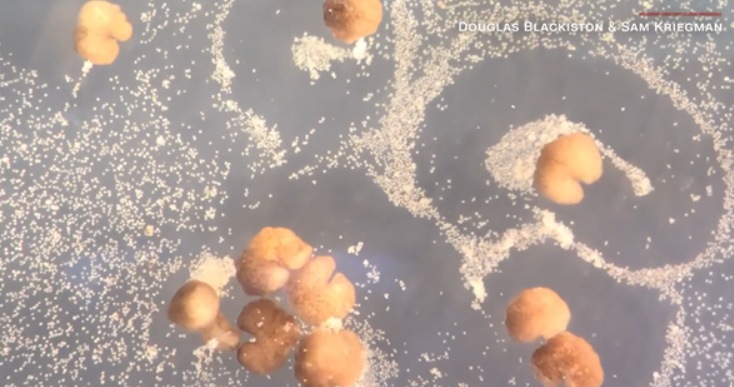From budding plants to sexual animals to viruses, life on earth has evolved multiple ways of reproduction for hundreds of millions of years.
According to @科技日报, recently, a research team from the University of Vermont and Tufts University in the United States discovered a new way of biological reproduction, and used this discovery to create the first ever self-reproducing living robot-Xenobots 3.0. The results of this study were published in the Proceedings of the National Academy of Sciences on the 29th.
Xenobots 3.0 is only millimeters wide. It is neither a traditional robot nor an animal, but a living, programmable organism.
video
The researchers found that if enough heterogeneous robots were placed close to each other in a petri dish, they would gather and start stacking other single stem cells floating in the solution.
As many as hundreds of stem cells have assembled "baby" alien robots in their "mouths" shaped like Pac-Man. In a few days, these "babies" will become new alien robots that look and act like their mothers.
Then these new Xenobots can go out again to find cells and build their own "copy", just like that, repeating again and again.
It is understood that Xenobots 3.0 may provide more direct and personalized drug treatments for trauma, birth defects, cancer, and aging in the future.
从萌芽植物到有性动物再到病毒,亿万年来,地球上的生命已经进化出了多种繁殖方式。
据@科技日报 报道,近日,美国佛蒙特大学和塔夫茨大学的研究团队发现了一种全新的生物繁殖方式,并利用这一发现创造了有史以来第一个可自我繁殖的活体机器人——Xenobots 3.0,这一研究结果发表在29日《美国国家科学院院刊》上。
Xenobots 3.0仅有毫米宽度,既不是传统的机器人,也不是一种动物,而是活的、可编程的有机体。
视频
研究人员发现,如果将足够多的异种机器人放置在培养皿中彼此靠近,它们会聚集并开始将其他漂浮在溶液中的单个干细胞堆叠起来。
多达数百个干细胞在它们如同吃豆人形状的“嘴”中组装了“婴儿”异种机器人。几天后,这些“婴儿”就会变成外观和动作都跟母体一样的新异种机器人。
然后这些新的Xenobots可再次出去寻找细胞,并建立自己的“副本”,就这样周而复始,不断复制。
据了解,Xenobots 3.0未来或可为外伤、先天缺陷、癌症、衰老等提供更直接、更个性化的药物治疗。
